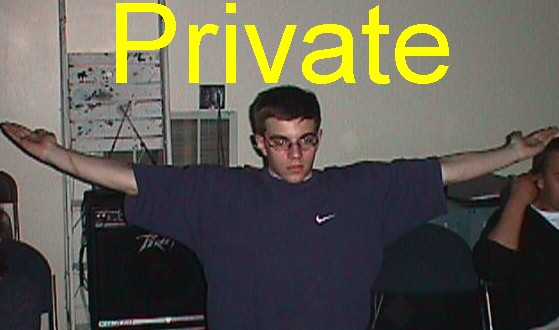






| Navigation | |
|---|---|







| |

| Elementary Particles

|
Subatomic partiicles, or elementary partciles, or the smallest units of matter, usually between the sizes of 4E-14 and 4E-17. Particle physics, or the study of elementary particles and their interactions, resulted as a discovery atomic particles. During the 20th century though, the focus of many of the physicists study turned from atomic to the sub-atomic.
Today, there are several hundred types of elementary particles known, and while it would be almost impossible for to tell all of them or to explain theit their interactions, I can give you a spectrum of the types of figures that led to the discovery of all these different particles. To help identify the different particles, physicists have developed a classification system which places the elementary particles in one of four classes; the photon, the leptons, the mesons, and the baryons. If you want to see a table that shows the four classes and explains what particles types fall in them and their description, click here. Particles may also be classified in terms of their spin, as either bosons or fermions. Bosons have a spin one whole integer times constant h, while fermions have a spin that is a half-integer of constant h.
In 1930, physicist Paul Dirac predicted on purely theoretical grounds that for every elementary particle, there is a corresponding anti-particle. The antiparticle of the electron was found two years later and was hence named the "positron". The antiproton was found later in 1955. It is now accepted that for every type of particle, there is a also an antiparticle with it. Some particles though, such as the photon, are actually their own antiparticles also. In notation, antiparticles are generally noted with a bar above the top like so: v�e is the antiparticle of ve. One distiction that should probably be noted is that antiparticles are not the same as antimatter, antimatter is made up of antiparticles, but the two terms are not interchangeable.
Interactions
Elementary particles are always being created and annihilated. This is due to the four that they put on each other. These forces are known as interactions. Today, four different types of interactions are definately known, while some are still just theories. The table below displays the different types.
Interactions Strong Nuclear Electromagnetic Weak Nuclear Gravitational
All of the listed interactions occur through the usage of a unique type of boson, which allows that interaction to occur. Different interactions also require different particles too. Nuclear interactions are the strongest interactions and are responsible for the bonding of the protons and neutrons in a nucleas, thus being responsible for the creation of the nucleas itself. Strong nuclear interactions also require the use of gluons to occur. The second strongest type of interaction is the Electromagnetic interaction, which controls the bonding of electrons to the nucleas of an atom. This interaction exchanges photons. The Weak nuclear reactions control radioactive decay in atomic nuclei. Weak nuclear interactions use bosons of W+, W-, or Z particles. The weakest of all the interactions are gravitational interactions. While I think we all agree that gravity is important, it's just really weak. Why? I don't know. This interactions results from the exchange of "gravitons". Gravitons are in quotes because they are still just theoretical concepts, they have not yet been proven true.
Conservation Laws
We have all heard of Conservation of energy. Energy is never created or destroyed, only converted. While this still holds true at the subatomic level, many other laws also exist to help govern them. While I myself can't explain all of these laws, This link can. If you check back next week, I will have the explanations up The additional laws are as follows:
Interaction Laws Symmetry & Quantum Numbers Parity Charge Conjugation Time Inversion Symmetry & Interactions strengths Symmetry & Quarks